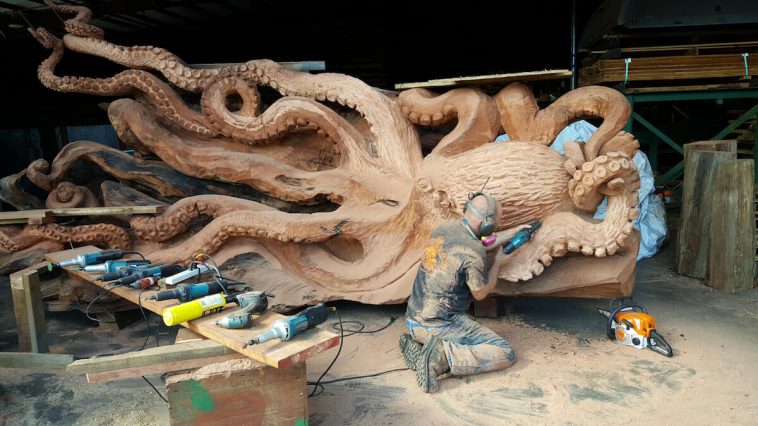- Wood carving, a form of woodworking, creates both functional objects and intricate art pieces.
- Various techniques like chip carving, relief carving, and whittling offer diverse artistic expressions.
- Essential tools include carving knives, gouges, and mallets.
- Selection of wood type is crucial for the desired outcome in carving.
- Wood carving has a rich history in cultures worldwide, with unique styles and methods.
Wood carving stands as a testament to human creativity, transforming simple wood into breathtaking sculptures and functional objects. This age-old craft, which employs cutting tools like knives and chisels, brings life to wood through figures, ornamental designs, and detailed sculptures. Let’s delve into the intricacies of this art form, exploring its techniques, tools, and the wood types that make each piece unique.
The Techniques: A Spectrum of Styles
Wood carving encompasses various styles, each offering a distinct artistic voice. Some popular methods include:
- Chip Carving: A method where small chips are removed to create intricate patterns.
- Relief Carving: This technique gives a 3D effect on a flat wood surface, creating a raised impression.
- Whittling: Using a knife to carve raw wood into shapes, whittling is one of the oldest carving methods.
Tools of the Trade: Crafting Precision
Precision in wood carving is achieved through an array of tools, each designed for specific tasks:
- Carving Knives: Essential for shaping and detailing.
- Gouges: Curved tools for removing large wood portions.
- Mallets: Used alongside chisels for controlled force application.
Wood Selection: The Foundation of Carving
The choice of wood significantly impacts the carving process and the final outcome. Commonly used woods include:
- Basswood: Preferred for its softness and ease of carving.
- Oak: Known for its strength and durability, ideal for intricate works.
- Mahogany: Offers a fine grain and an appealing finish.
A Global Tapestry: Cultural Significance
Wood carving is a global art form, each culture imparting its unique touch:
- European Traditions: Medieval Europe saw wood carving flourish with religious themes.
- African and Oceanic Carvings: These regions are known for their expressive masks and figures, carved from light, durable wood.
- Asian Artistry: China and Japan are renowned for their intricate wood sculptures, often showcasing religious and historical themes.
The Artistic Process: From Concept to Creation
The journey of creating a wood carving involves several stages:
- Designing: Initial sketches and designs are formulated.
- Roughing Out: Large pieces of wood are removed to form a basic shape.
- Detailing: Fine details are carved to bring the piece to life.
- Finishing: Techniques like sanding and oiling are used for a smooth finish.
Preserving the Legacy: Care and Maintenance
Proper care is vital for the longevity of wood carvings. Regular cleaning and occasional oiling help protect the wood from decay and maintain its luster.
In conclusion, wood carving is an art form that beautifully marries functionality with creativity. Whether it’s a simple whittled figure or an elaborate relief carving, each piece tells a story, echoing the cultural richness and artistic prowess of its creator. As we continue to appreciate and preserve this art, we ensure that the legacy of wood carving endures for generations to come.





